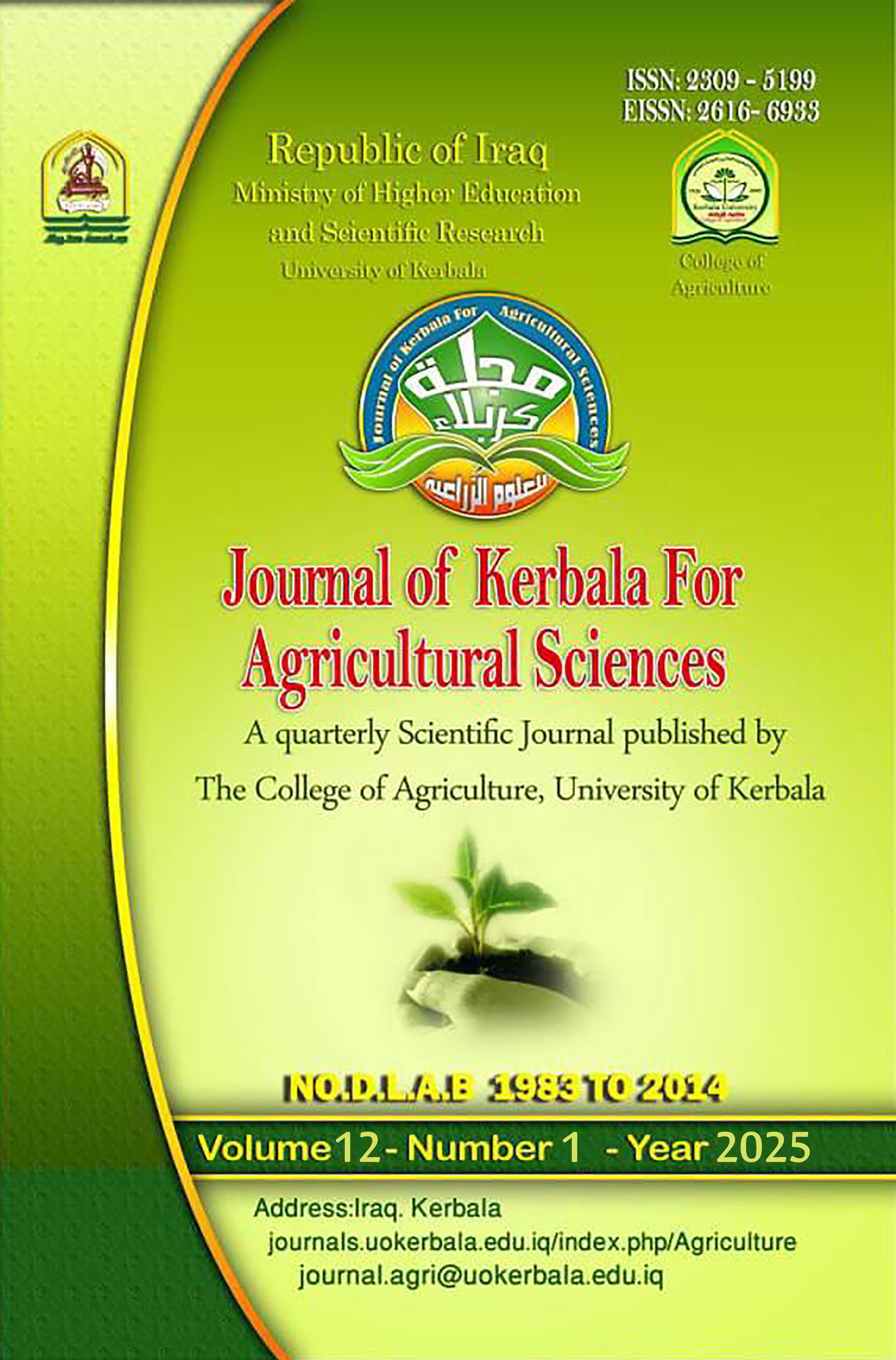Effect of spraying with thiourea and boron on growth parameters of sweet marjoram (Origanum majorana L.)
DOI:
https://doi.org/10.59658/jkas.v12i1.3283Keywords:
Medicinal plants, Lamiaceae, SH, marjoram, NH2Abstract
A pot experiment was carried out in the Horticulture and Landscape Department, College of Agriculture, University of Kerbala during the spring season of 2024. The study aimed to investigate the impact of thiourea spraying at concentrations of 0, 500, 750, and 1000 mg L-1 (T0, T1, T2, T3 respectively) and boron spraying at concentrations of 0, 25, 50, and 100 mg L-1 (B0, B1, B2, B3 respectively) on the vegetative growth characteristics of sweet marjoram. The study was conducted according to a randomized complete block design with three replications. The results showed the differential effect of adding the study factors individually, as the concentration (1000 mg L-1) thiourea had a significant superiority in all traits except for the leaf area trait, while for spraying boron, the significant superiority was for the concentration (100 mg L-1) in all traits. The interaction between thiourea and boron was significant, as treatment T1 B3 was superior in plant length and gave (29.45 cm), while treatment T3 B2 was superior in stem diameter and number of branches and gave (2080 mm) and (18.68 branches plant-1) respectively. As for leaf area, the highest average was at the interaction equation T2 B3 and reached (1.134 cm2), and the interaction treatment T3 B3 gave the highest average of dry matter percentage of (24.97%) and the highest total chlorophyll content of (57.91 mg 100 g fresh weight). The important conclusion of this study is the significant effect of the study factors on the growth of this herb of medical importance.
Downloads
Published
How to Cite
Issue
Section
License
Copyright (c) 2025 Copyright (c) 2024 is the Author's article. Published by the Journal of Kerbala for Agricultural Sciences under a CC BY 4.0 license

This work is licensed under a Creative Commons Attribution 4.0 International License.
Licensing Terms
All articles are published under a Creative Commons License and will be directed to the Creative Commons Attribution 4.0 International License (CC BY 4.0) That permits use, distribution, and reproduction in any medium, provided the original work is properly cited. This license also allows the work to be used for commercial purposes.
Use by both non-commercial and commercial users
This content is licensed under a Creative Commons Attribution 4.0 International (CC BY 4.0) license, permitting use by both non-commercial and commercial users. Individual users may access, download, copy, display, and redistribute the articles to colleagues, as well as adapt, translate, and text- and data-mine the content, subject to the following conditions:
- The author's moral rights, including the right of attribution and the right to protect their work from derogatory treatment, are respected.
- Where content in the article is identified as belonging to a third party, users must ensure that any reuse complies with the copyright policies of the owner of that content.
- If the article content is reused for research or educational purposes, users should maintain a link to the appropriate bibliographic citation, including the DOI and a link to the published version on the journal's website.






